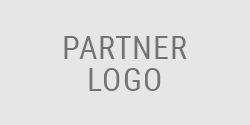How Much Debt is Considered "Too Much" Debt?

If you're an adult, you probably have some combination of:
- Student loans
- Car loans
- Home loans
- Personal loans
- Credit card debt
Probably not all, but at least one or two. Having debt is normal. Using credit is normal (and almost mandatory in some ways).
So having debt isn't a big deal. But having too much debt can be a major problem. It can be extremely costly, generally stress-inducing, and prevent you from reaching your goals.
With that mind, when does debt cross the threshold into "too much debt"? How can you tell if you're heading toward the danger zone?
Find your Debt-to-Income Ratio (DTI)
There are typically a lot of warning signs that you have too much debt:
- You think about your debt all the time
- You can only afford to make minimum payments on your debts
- You're not making progress on your debts
- Your debt payments are limiting you in significant ways
But these signs are usually only apparent once you're already in trouble. Instead, it's helpful to just let the numbers tell you whether or not you're trending in a bad direction.
A handy mathematical guide to where you stand with your finances is your debt-to-income ratio. As you might expect, it’s a measurement of your debt versus your income and a good way to determine if your debt is out of hand.
To determine the ratio you have to add up all of your debt and divide it by your income. Your debt, in this case, includes your mortgage/rent payments, your car payments, all loan payments (student, personal), your minimum credit card payments and any other court-ordered payments or garnishments (alimony/child support). Your income is just that – everything you make in a month (after taxes have been deducted). Here'[s a simple example:
Let's take someone with monthly payments for a car loan, student loan, and credit cards, with an annual gross income of $60,000:
Monthly debts:
- Car: $350/month
- Student loan:$500/month
- Credit cards: $450/month.
- Total: $1,300/month
Annual gross income: $60,000 ÷ 12 = $5,000 gross monthly income
Monthly debt payment ($1,300) ÷ gross monthly income ($5,000) = 26% DTI
The normal ratio is between 30 and 36%. If less than 30 percent of your income is going towards debt repayment that’s considered superb (especially by potential lenders). If your ratio is over 40 percent, however, that’s considered to be extremely high and a sure sign that your debt is potentially getting out of control.
Our example debtor is in good shape! However, if they had to a large expense on their credit card and those payments went from $450/month to $1,000/month, suddenly their DTI would be 37%. Not scary, but over the normal range.
Why debt-to-income matters
Personal finances are complicated. There are a million factors that go into whether or not you're doing "well" financially. DTI is just one way to cut through that complexity. It's most helpful as a benchmark to show you whether things are moving in a positive direction.
In that sense, it doesn't really matter where you measure against the "normal" ratio. If you're living comfortably at a 40% DTI, that's fine (unless you're applying for a mortgage soon, in which case you may want to make some changes). Chances are good, however, that you won't be living as comfortably at a 50% DTI. So if your ratio is ticking in the wrong direction, that's a sign that something needs to change.
Listen to yourself
Debt-to-income ratio is a nice, judgment-free equation that shows you where you stand with your debts. But the fact of the matter is that if you feel like you have too much debt, that's enough to spark a change.
If you're looking for the answer to the question, "Do I have too much debt?" you already know the answer. Any amount of debt that feels uncomfortable is too much debt for you. You don't need to hit a certain number before you're allowed to do something about it. If you don't like how much debt you have, do something about it.
At MMI, we offer personalized debt relief solutions that fit your needs and your goals. Need lower interest rates? We can help. Need a lower payment? We can help there, too.
Begin online today and get a full analysis of your financial situation, along with our top suggestions for how to best reach your debt repayment goals.
















